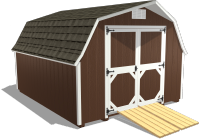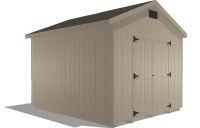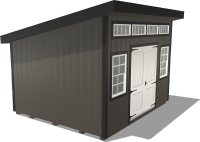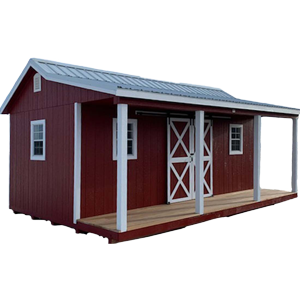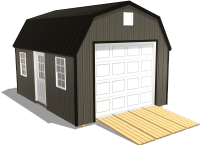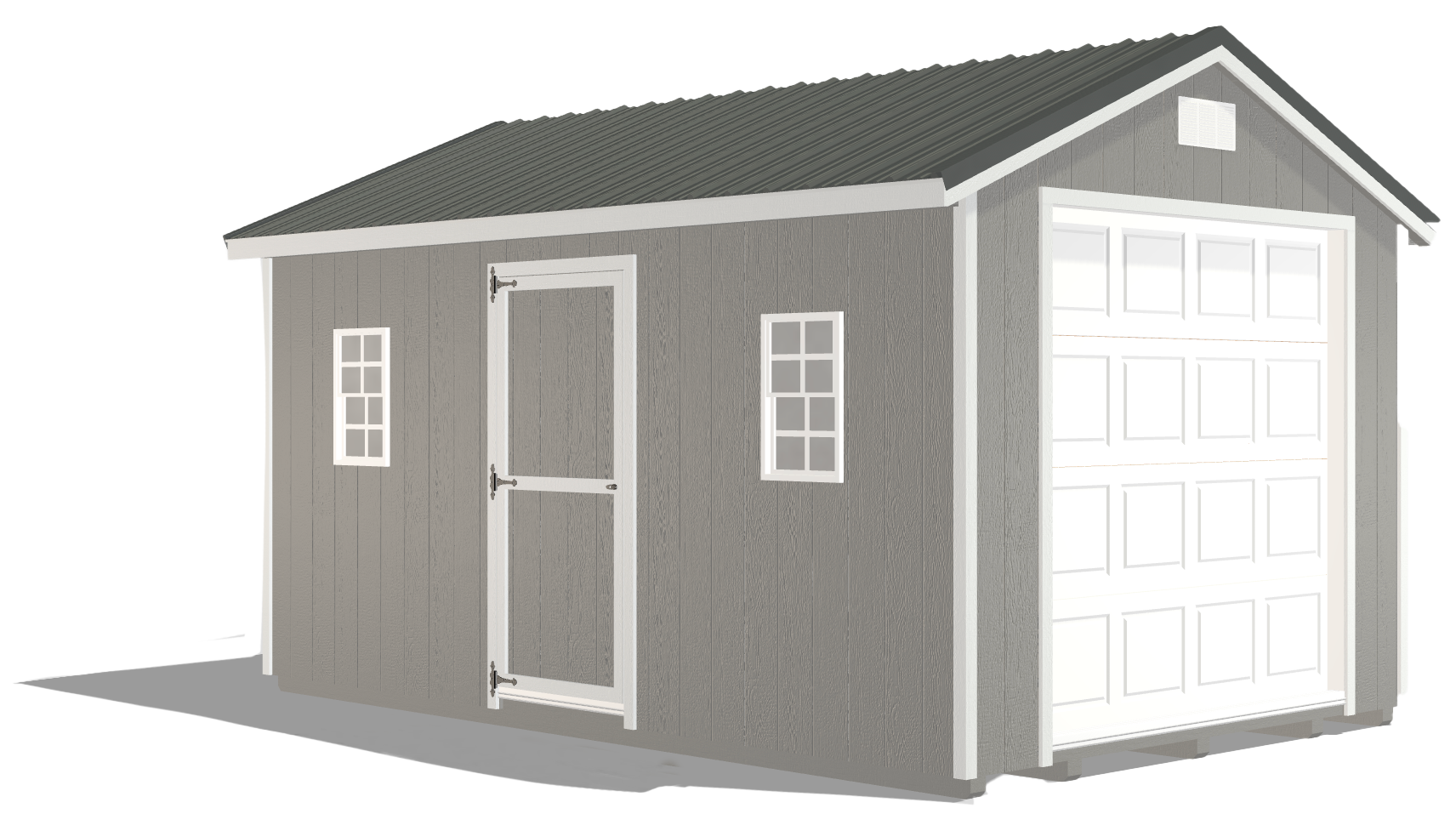Maximize Your Yield by Choosing the Best Greenhouse Vegetables to Grow
by Dakota Storage Buildings, on January 27, 2025

Greenhouse gardening is an effective way to extend the growing season, protect plants from pests, and optimize environmental conditions to produce high-quality yields. By creating a controlled growing space, gardeners can cultivate crops in ways not always possible outdoors. However, not all vegetables thrive equally in a greenhouse. While some greenhouse vegetables flourish and yield abundantly, others may face challenges that require more attention and resources to overcome.
Here, we will guide you in selecting the best vegetables for a greenhouse, highlight crops that might struggle, and provide practical tips to optimize greenhouse conditions for success. Whether you are a seasoned gardener or a beginner, these insights will help you make the most of your greenhouse.
The Best Vegetables to Grow in Your Greenhouse
Certain vegetables are naturally suited for the controlled environment of a greenhouse, making them top choices for consistent yields and high-quality produce.

Tomatoes
Tomatoes are often referred to as the star of greenhouse gardening. Their preference for consistent warmth and protection from outdoor pests makes them ideal for greenhouses. Indeterminate varieties are especially productive, continuing to grow and produce fruit throughout the season. Support them with trellises or stakes to maximize vertical space and encourage healthy growth.

Cucumbers
Cucumbers thrive in warm, humid conditions and are excellent for vertical gardening. Trellising not only saves space but also keeps the fruit off the ground, reducing the risk of disease and blemishes. Regular pruning and proper ventilation are key to maintaining healthy cucumber plants and achieving abundant harvests.

Peppers (Bell and Chili)
Both sweet bell peppers and spicy chili peppers perform exceptionally well in greenhouses. They flourish in warm, consistent temperatures and require minimal space, making them perfect for small or large greenhouse setups. Plant them in containers or directly in the ground, and enjoy vibrant, flavorful harvests throughout the growing season.

Leafy Greens
Leafy greens like lettuce, spinach, and kale are quick-growing and well-suited to greenhouse gardening. They prefer slightly cooler spots within the greenhouse and can be harvested multiple times during their growing cycle. These nutrient-packed greens are an excellent addition to any greenhouse garden.

Herbs
Herbs like basil, cilantro, and mint are highly adaptable to greenhouse environments. Compact in size and versatile, they can be grown year-round and used fresh for culinary or medicinal purposes. Herbs are an easy and rewarding choice for both beginner and experienced greenhouse gardeners.
Vegetables That Are Not Ideal for Greenhouses
While many vegetables flourish in greenhouses, some are less suited to this controlled environment due to specific growing requirements.

Root Vegetables (Carrots, Beets, Radishes)
Root vegetables often struggle in greenhouses due to the space and soil conditions they require. These crops need deep, loose soil to grow properly, which can be difficult to replicate in a greenhouse environment. They also perform better in cooler outdoor temperatures.
.jpg?width=100&height=100&name=Email_Beans_300x300%20(1).jpg)
Beans
Beans require abundant airflow and benefit from outdoor pollination, which can be challenging to replicate in a greenhouse. Without proper ventilation, they are susceptible to fungal diseases like powdery mildew. While possible to grow indoors, beans tend to be more successful in open-air environments.

Brassicas (Broccoli, Cabbage)
Brassicas thrive in cool conditions, making it challenging to grow in the consistently warm environment of a greenhouse. Without adequate cooling systems, these crops may bolt or fail to produce high-quality heads.

Corn
Corn’s height and pollination needs make it unsuitable for most greenhouse setups. The lack of wind or pollinators in a greenhouse can hinder its growth and productivity. Additionally, corn requires substantial space, which can be impractical in smaller greenhouses.
Create Ideal Growing Conditions for Thriving Crops
Creating the right conditions in your greenhouse is essential to support a wide range of crops and maximize your yields.
Temperature Control
Maintaining a consistent temperature is vital for warm-season crops like tomatoes, peppers, and cucumbers. Use heaters or shade cloths to manage temperature extremes during winter and summer. A thermometer or thermostat can help you monitor and adjust temperatures as needed.
Humidity and Ventilation
Proper ventilation prevents mold, mildew, and fungal diseases while maintaining healthy air circulation. Install vents, fans, or automatic ventilation systems to regulate humidity levels and ensure adequate airflow. For particularly humid conditions, consider using a dehumidifier.
Lighting
While natural sunlight is ideal, supplemental lighting is often necessary during shorter winter days or in shaded areas of the greenhouse. LED grow lights are an energy-efficient option that provides the right spectrum of light for plant growth. Position lights to ensure even coverage and avoid shadows that can stunt plant development.
Watering Systems

Efficient watering is crucial in a greenhouse environment. Drip irrigation systems deliver water directly to the plant roots, reducing waste and preventing diseases caused by excess moisture on leaves. Installing a timed system can help ensure consistent hydration, especially during busy periods.
Soil Management
Healthy soil is the foundation of a productive greenhouse garden. Regularly amend soil with compost or organic fertilizers to maintain nutrient levels. For crops with specific needs, consider using raised beds or containers filled with custom soil mixes to optimize their growth.
Tips for Adventurous Greenhouse Gardeners
If you want to experiment with crops that are less commonly grown in greenhouses, start with small quantities to test their performance. Invest in tools like humidity monitors, soil thermometers, and pollination brushes to provide these crops with the best possible conditions. While these vegetables may require extra effort, the rewards of a diverse greenhouse harvest can be worth it.
Take Your Greenhouse Gardening to the Next Level
Greenhouse gardening offers endless possibilities for growing fresh, high-quality greenhouse vegetables year-round. By focusing on crops like tomatoes, cucumbers, and leafy greens, you can achieve abundant yields with minimal effort. Experimenting with different crops and refining your techniques will allow you to make the most of your greenhouse. Whether you are growing staples or trying something new, the controlled conditions of a greenhouse can transform your gardening experience. With thoughtful planning and care, your greenhouse can become a thriving hub of productivity and creativity.
Ready to start your greenhouse gardening journey? Explore our range of pre-built greenhouses designed to suit every gardener's needs. With durable materials, customizable options, and thoughtful designs, Dakota’s greenhouses provide the perfect foundation for year-round growing success. Browse our stock today to find the ideal fit for your backyard!





